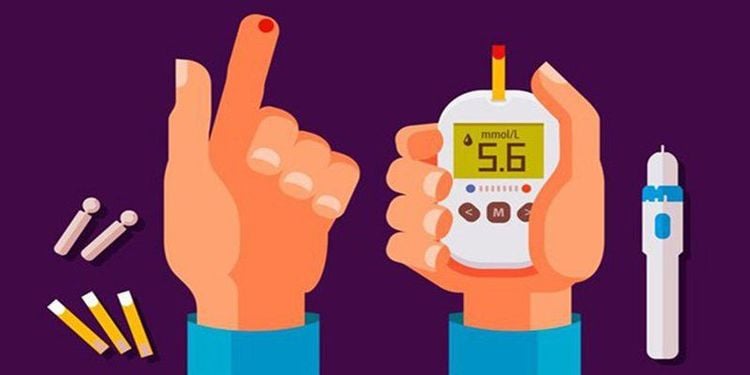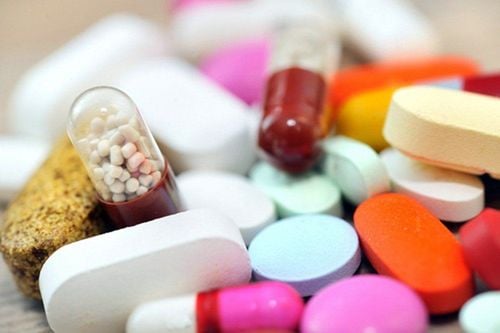This is an automatically translated article.
The article is professionally consulted by Master, Doctor Vu Thi Duyen - Doctor of Nephrology - Endocrinology - Department of Medical Examination & Internal Medicine - Vinmec Hai Phong International General Hospital. The doctor has more than 11 years of experience in medical examination and treatment of general internal medicine, especially has strengths in examination and treatment specialized in nephrology - Endocrinology.1. What is insulin resistance?
Insulin is a major anabolic hormone in the body that plays an important role in tissue growth, development, and maintenance of glucose homeostasis in and out of cells.Insulin is secreted by the beta cells of the pancreas. This hormone plays an important role in the regulation of blood glucose balance by inhibiting hepatic glucose production and accelerating glucose absorption mainly into skeletal muscle and adipose tissue. In addition, insulin also affects lipid metabolism, increases lipid synthesis in the liver and fat cells, and reduces the release of fatty acids from adipose tissue.
Insulin resistance is defined as a state of reduced responsiveness of target tissues to normal circulating levels of insulin. This is the main and most important mechanism in the development of type 2 diabetes. Moreover, insulin resistance is also a manifestation of a number of other metabolic disorders in the body: Obesity, impaired glucose tolerance, dyslipidemia and hypertension are in the context of metabolic syndrome.

2. What is the mechanism of insulin resistance?
Most of the current understanding of the mechanism of insulin resistance is based on experimental findings on the pathophysiology of insulin resistance obtained from studies in animal and human models. In which physiologists use radioisotopes attached to glucose molecules to monitor their metabolic pathways as well as the role of insulin on this pathway through organs such as skeletal muscle, heart muscle, and adipose tissue. and liver.Accordingly, studies have shown that in humans skeletal muscle is the predominant tissue for glucose absorption under insulin-stimulated conditions. The amount of glucose absorbed is about 75% of the glucose absorbed after a meal. After entering the cell, glucose is either phosphorylated by hexokinase and stored as glycogen upon activation of glycogen synthase or oxidized to produce ATP upon activation of enzymes such as pyruvate kinase. While in adipocytes when glucose is absorbed into the cells they are stored mainly as lipids by lipid synthesis enzymes. Accordingly, insulin also inhibits lipolytic enzymes to increase glucose intake.
For hepatocytes, insulin not only activates and increases the number of glucose molecules transported across the cell membrane, but also inhibits glucose production and release. To do this, insulin works through a series of other reactions that block glycolysis and increase glycogenolysis.
Through the use of radioisotope-bound glucose molecules, scientists have demonstrated that under hyperglycemic conditions, muscle glycogen synthesis is the primary pathway for glucose metabolism rather than increased glucose utilization. in skeletal muscle cells. The cause of this transformation is insulin resistance. Similarly, when blood glucose rises higher, beyond the sensitivity of the cells to disproportionately increased insulin levels, the cells do not take up any more glucose.
The consequence of this phenomenon is higher and higher glucose levels. Insulin resistance further inhibits glucose-metabolizing enzymes that synthesize glycogen or lipids. This loop will cause the body to have real diabetes.

3. How to apply insulin resistance mechanism in the treatment and prevention of diabetes
The prominent difference between type 2 diabetes and type 1 diabetes is the mechanism of insulin resistance.The cells themselves are no longer sensitive to insulin, reducing glucose absorption into the endothelium, in the treatment of type 2 diabetes. Therefore, the use of drugs to increase insulin sensitivity plays a key role. Instead of drugs that stimulate the beta cells of the pancreas to produce more insulin, insulin sensitizers work to both help cells transport more glucose across the membrane while preserving the number of beta cells. pancreas. The peripheral organs that are the target tissues of this class of drugs are liver tissue, adipose tissue, and skeletal muscle. From there, liver tissue increases glucose collection to synthesize glycogen, adipose tissue increases lipid and skeletal muscle will also create a reserve of energy.
To prevent diabetes, preventing the development of insulin resistance is the most important problem that we need to overcome to reduce the current prevalence of diabetes. Specifically, cells will be more inclined to increase insulin sensitivity and increase endothelial glucose uptake when they themselves increase their demand. At that time, the body's need to use the most energy is spent on daily living activities. Therefore, people with risk factors for insulin resistance syndrome such as obesity, large waist circumference, hypertension, dyslipidemia... will be advised to increase movement and physical activity to increase consumption. energy, increased glucose requirements, and decreased insulin resistance.
In summary, insulin resistance is a state of decreased sensitivity of cells to insulin, reduced glucose transport into cells and thereby will play a key role in the progression to true diabetes. Increasing effective daily physical activity will increase the need to use glucose for energy, increase the sensitivity of cells to insulin and thereby contribute to the prevention of type 2 diabetes.
Please dial HOTLINE for more information or register for an appointment HERE. Download MyVinmec app to make appointments faster and to manage your bookings easily.
Reference article source: NCBI, diabetes.diabetesjournals.org













